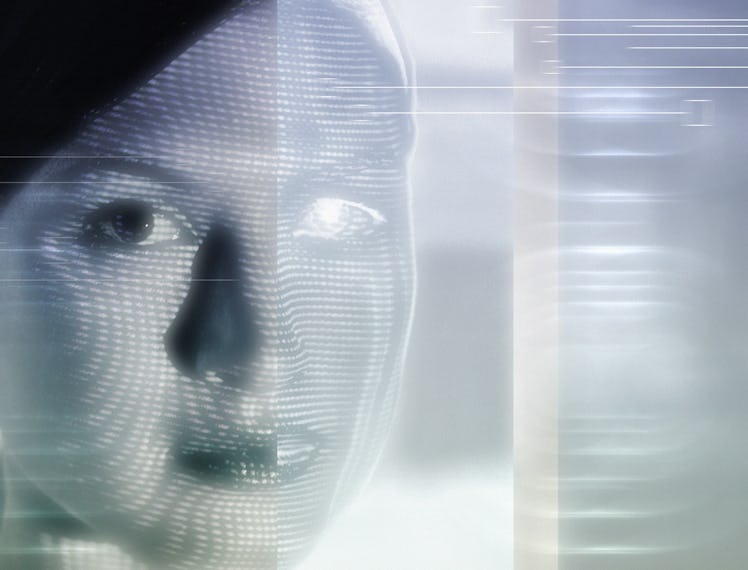What Is Going On With Instagram’s Sudden AI Image Obsession?

A rippled reflection in a pond wouldn’t be enough for Narcissus in today’s world. The original Greek tragedy twink would need to see his visage reflected back to him in a million selfies, through a thousand filters, and in front of dozens of varied backgrounds—Mykonos, the Museum of Ice Cream—before finally meeting his fate. Instead of a flower, he’d be turned into the lens of his own iPhone, which is pretty much what the hot new app, Lensa, promises to do.
Your Instagram and Twitter feeds have likely been clogged with the app’s renderings over the past few days. At first, the images appear to be digital portraits your friends and followers commissioned for themselves, as if some entrepreneurial Etsy illustrator with a Wacom tablet is running an Adderall-fueled holiday special. As it turns out, the imagery is actually AI-generated from Lensa. It’s the latest in an increasingly common line of AI trends and toys on the Internet, but this seems to have really taken off, thanks to people-love-seeing-photos-of-themselves reasons.
Bored, freshly paid, and weak-willed, I decided to give it a try. Here’s what I found.
1. Download the App, and Prepare to Pay
Lensa is free to download from the Apple and Android stores, but the images do cost money to generate, and, if you’re not careful, you could end up paying more.
Lensa’s main feature is actually a (not particularly unique-seeming) photo retoucher feature that claims to use AI. It costs $29.99 a month to use, but when signing up, you can opt for a one-week trial (just make sure to cancel it at least 24 hours before it charges you). Once you’re in, the app will call your attention to its “Magic Avatars” features. This is likely the AI-imaging feature you’re seeking.
To generate the images, you have to pay, and there’s no free trial available for these. They come in packs ranging from $3.99 for 50 images to $7.99 for 200. In Lensa’s defense, Kodak film used to cost more money, too.
2. You’ll Have to Upload 10 to 20 Existing Photos of Yourself
The app does not magically guess what you look like. You have to supply it with 10 to 20 preexisting images of yourself. You have to be the only person in the photos, and they ask for a variety of angles and backgrounds. You should also probably go ahead and upload a few variations of facial expressions, too. I’m not smiley by nature, and all of my results ended up being stone-faced stoics as a result.
Your clothing choice and body also affects what’s produced. If you’ve seen an image generated of someone with rippling muscles, it’s likely because they supplied their own shirtless gym thirst traps. Sorry—biceps not included.
3. You Also Have to Select Your Gender, Which Dictates the Theme of Your Images
Lensa will generate images in various themes including anime, fantasy, fairy princess, astronaut, rockstar, and superhero, but you can’t chose which, and the selection seems to be influenced by your gender (note: you can choose “other” in addition to male and female). In other words, no fairy princess renderings for anyone who selects “male” allowed. “We’re all born naked and the rest is drag” ...except in currently available AI technology.
Whatever the case, the themes are mostly basic or geeky. You can look like a Jedi (which they call “mystic”) or a superhero, but you don’t get to see yourself as, say, a fashion model or Studio 54 regular. Boring. I wanted to be a Grace Jones backup dancer, not an extra in Dune.
4. Then, You Wait
The app then told me to wait 100 minutes. I didn’t time it exactly, but that didn’t seem like an underestimate.
5. Get Your Images; Break Down Over Your God-Given Appearance
Most of the images do end up looking uncannily like you, which shouldn’t be too much of a surprise. Yet the results have a disorienting, fun house mirror effect which will have you running to an actual mirror to confirm how you look in real life.
Some images will highlight and harmonize the features you like best about yourself in a way that will leave you tempted to take the results to your nearest plastic surgeon. Others, however, will highlight your insecurities in a way that’ll leave you feeling like you’re in a sci-fi film and staring down your own failed cloning experiment. “Have mercy on my father! End my suffering!,” it seems to say back to you.
I only dared to post one photo on social media, and someone told me almost instantly it had “Skarsgård eyes.” Is that an insult? A compliment? An aspiration? Does it apply to me, or just my AI offspring? I’m still not sure, but it certainly will haunt me for the rest of my life.
6. ...Then Freak Out About What This Means for the Real World
It’s easy to see (relatively) harmless applications this technology could be used for in the future. Gamers could soon use a similar process to create in world avatars of themselves—duh.
But in a world where tweets with fake information have a surprising impact on stock markets and elections, increasingly easy-to-produce fake imagery can be quite the threat. Did I end up paying $5.99 to help train technology that will someday get a President of the United States impeached after it generates an image of them at an ’80s coke orgy with Fidel Castro and Leona Helmsley? Plus, there’s a healthy amount of concern over artists’ rights and the app’s potential racial biases.
When Narcissus died from his vanity, at least he was turned into a pretty flower. Does the modern version of vain call for creating some sort of invasive, world-ruining vine? I’m not sure yet. But I can’t stress enough how mildly “neat” it was to see myself as an astronaut.